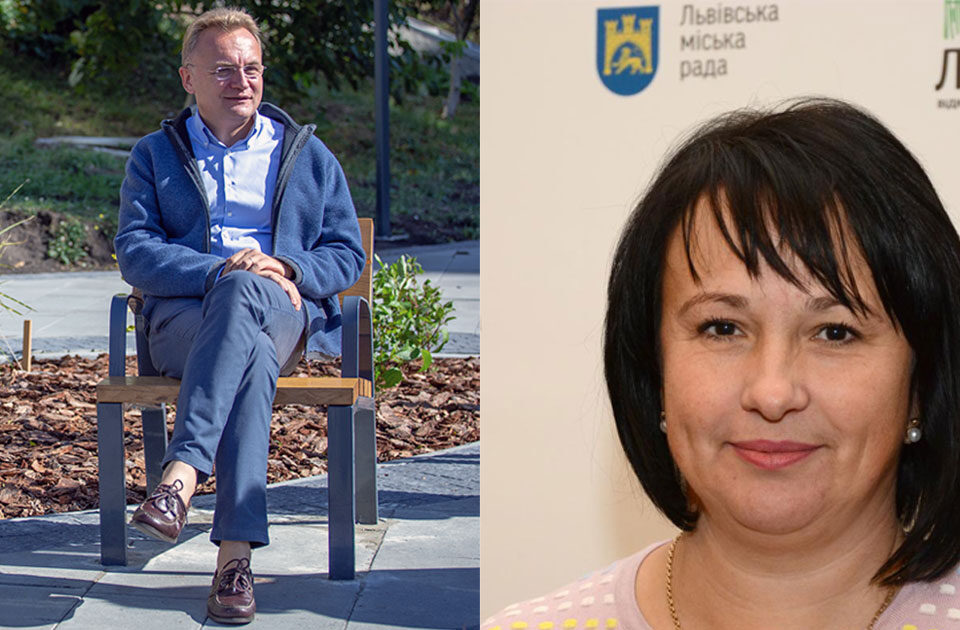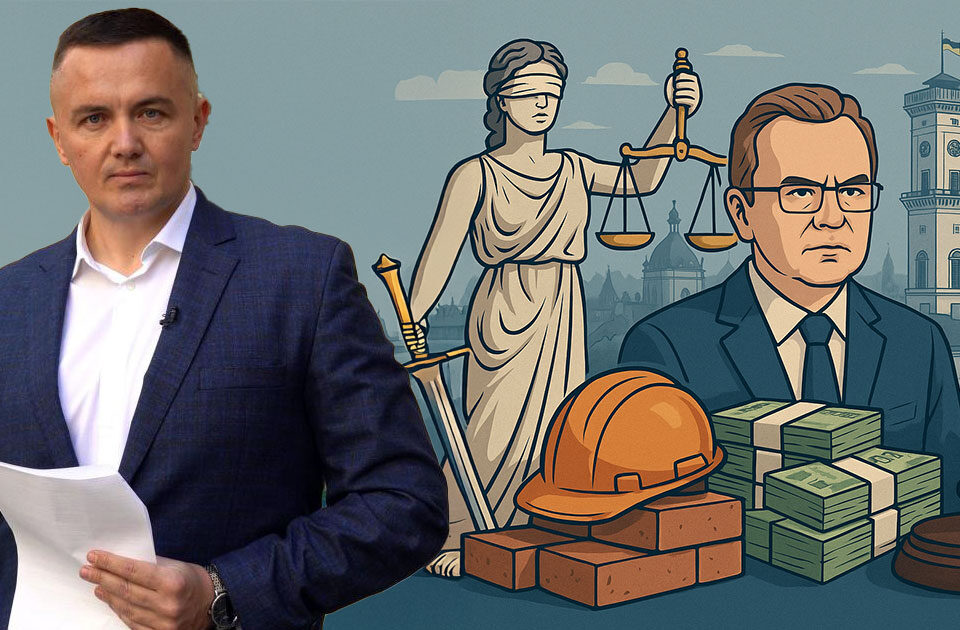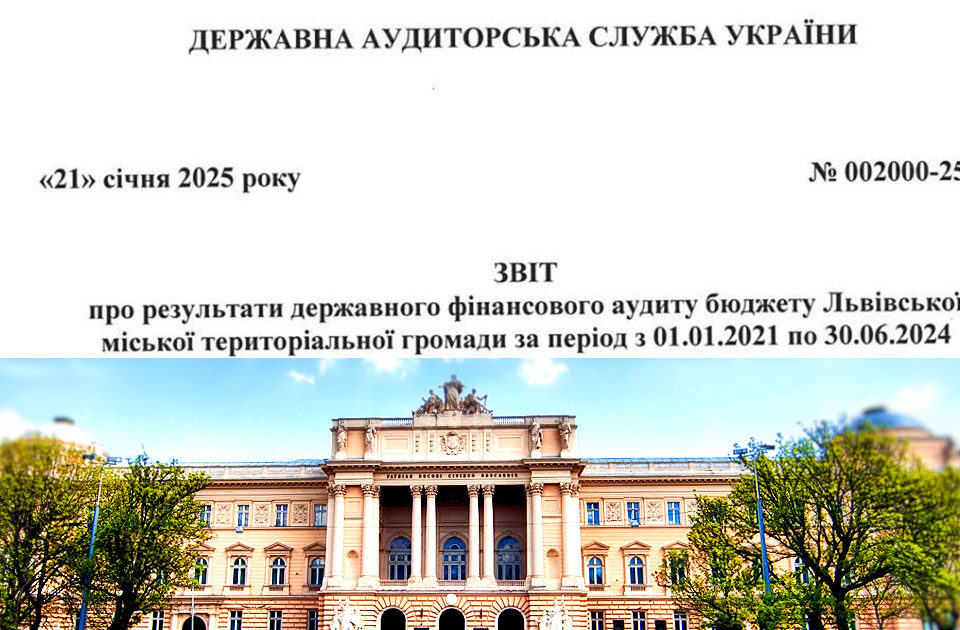
Gambling: KRAIL fines the company of Andriy Sadovyi’s wife
April 21, 2024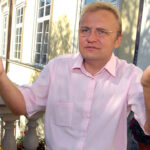
No bonuses or surcharges. Astronomical cash bonuses are canceled for Andriy Sadovyi’s officials
May 10, 2024Sadovyi is dragging Lviv into a debt pit. The city has loans worth UAH 6.8 billion!
Lviv city government spends astronomical amounts on loan repayments, exceeding the cost of helping the Armed Forces of Ukraine
For a long time, the city authorities of Lviv have been actively using the opportunity to take out loans for the development of the city. This approach has its pros and cons. On the one hand, attracting financial resources allows for the prompt implementation of infrastructure projects, such as road repairs, the purchase of new public transport, or the construction of a waste processing plant. In addition, it helps to maintain a high level of popularity of the politicians running the city. On the other hand, every loan involves a certain risk.
Borrowing to finance a city can be an effective strategy if the local economy is booming and the city budget is growing accordingly. However, when a city finds itself in a difficult situation due to global crises, such as a pandemic or a full-scale invasion, circumstances can change. Instead of investing in development, they have to take out loans to ensure survival. And the significant amounts spent on debt repayment significantly reduce the ability to finance new projects. For example, this year Lviv is allocating more funds to repay loans than to help the Armed Forces of Ukraine. Journalists from LVIV.MEDIA analyzed to whom, how much, and for what Lviv taxpayers return money, and how this affects the life of the city.
For example, this year the city is obliged to redeem bonds that have doubled in value. In 2020, the Lviv City Council issued three series of municipal bonds totaling UAH 900 million: series J, K, and L for UAH 300 million each. These funds were used to repair the city’s infrastructure on a large scale, including Dvortseva Square, Bandera, Zamarstynivska, Lychakivska, Khutorivka, Shevchenko and other streets. A total of 22 repairs and three more reconstructions were carried out. However, the bonds will be repaid in 2025. So far, they are only paying interest. Ukrgasbank won all three bond tenders, offering an interest rate that was 2.5% higher than the National Bank of Ukraine’s discount rate. Thus, while the interest rate on the bonds was 8.5% at the beginning of the payment of interest, in 2024 it will be 17% per annum. By the way, Oleh Vasylyshyn, director of the Lviv regional directorate of Ukrgasbank, is also a member of the Lviv City Council from the Samopomich faction.
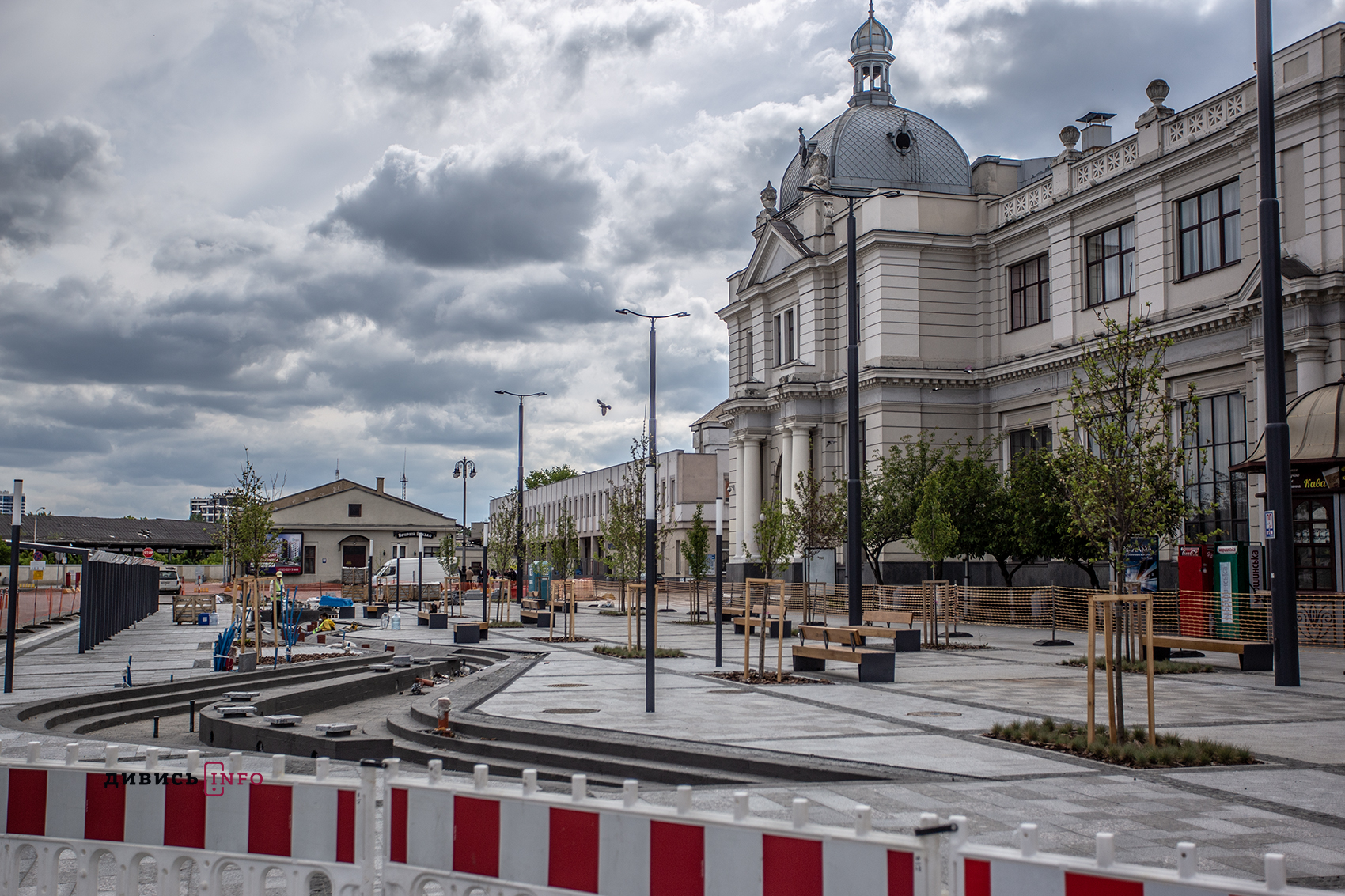
Dvortseva Ploshcha (the railway station) was repaired with money from the sale of municipal bonds. Photo – Dyvys.Info
Loans in the era of COVID-19
In 2021, Lviv City Council continues to raise financial resources, but this time it is due to a new situation. Previously, the funds were used to develop infrastructure, but now the main goal is to overcome the economic challenges caused by the COVID-19 pandemic. At the end of May 2021, the city council decided to obtain a UAH 390 million loan for a 5-year term from two state-owned banks: Ukrgasbank (UAH 220 million) and Ukreximbank (UAH 170 million). Iryna Kulynych, director of the city’s economic development department, explained the need for these loans as a result of the pandemic: “First of all, this is financing the development budget… The implementation of the development budget is not yet fully satisfactory during the first 4 months of this year. This is mainly due to the pandemic and quarantine restrictions that affected the business of our community.” For his part, Petro Adamic, head of the European Solidarity faction, emphasized on the need for these funds to pay for the work already completed: “Realizing that without these loans the city will simply stop, I convinced my colleagues to support this decision… If we do not take these loans, we will simply stop. We will stop paying for our debts, including for the work done a year and a half ago.” As with the bonds, the cost of these loans depends on the National Bank of Ukraine rate, to which the lending banks add their own margin (2.5% for Ukrgasbank and 2.4% for Ukreximbank). The annual interest rate (without additional fees) was 10% and 9.9%, respectively, when the city council members voted. However, this year Lviv is obliged to repay these loans at rates ranging from 17% to 16.9%, which will result in the cost of paying UAH 120 million to banks to replenish the development budget taken three years ago.
Scandalous loan for paint and varnish
Another loan that allowed the city to stay afloat was a loan from the European Bank for Reconstruction and Development under the “Resilience Program” that the bank developed to support its partners during the full-scale invasion. The city of Lviv decided to take advantage of this offer to borrow up to EUR 25 million for 4 and a half years. The money was supposed to be used to rescue unprofitable utilities in Lviv: to pay salaries to their employees, pay for energy, and repay debts. This loan became the subject of another political conflict between Andriy Sadovyi and members of the city council. It’s worth noting here that in order to take out a loan abroad, city council members must vote twice: first to authorize the signing of the agreement, and then to approve it. In both cases, the decision is made by a two-thirds majority. Here’s a brief history of how the city authorities made the decision to borrow:
- December 6, 2022: MPs allow the loan agreement to be signed
- December 30, 2022: Lviv City Council and the EBRD sign a loan agreement
- March 2, 2023: MPs do not approve the signed agreement
- March 14, 2023: despite the decision of the deputies, the executive committee of the Lviv City Council decides to accept the terms of the loan agreement
- May 25, 2023: deputies cancel the decision of the executive committee as illegal, Lviv Mayor Andriy Sadovyi vetoes the decision
- July 06, 2023: deputies fail to override the mayor’s veto
- July 07, 2023: the executive committee of the Lviv City Council cancels its own decision of March 14
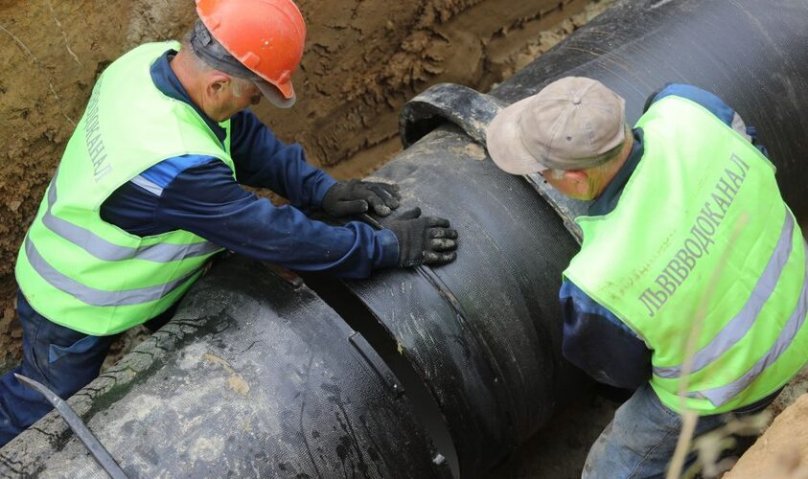
Lviv borrows money to pay utility bills. Photo: Lviv City Council
In other words, as of now, there is no valid document confirming that Lviv has agreed to the terms of the loan. However, while the dispute was ongoing, the Lviv authorities managed to get 15 million euros (UAH 593.2 million at the time) from the EBRD. And borrowed money has to be paid back. The cost of this loan depends on the six-month Euribor rate (4.8% as of April 19), to which the EBRD adds its 2.5% margin. This year, Lviv has already begun to repay the loan: On April 8, Andriy Sadovyi ordered to transfer UAH 107.6 million to the EBRD. Another such payment is due in October this year.
Debts of public utilities
In addition to direct loans to the city budget, Lviv actively attracted loans through its municipal enterprises. The following scheme works here:
- LKP takes out a loan from an international financial institution
- Lviv City Council guarantees that its company will repay the loan
- The city council replenishes the company’s authorized capital with the amount to be returned
- The company uses this money to pay off the loan
In fact, the debts of municipal enterprises also fall on the shoulders of taxpayers in Lviv. As can be seen from the previous story, Lviv’s municipal enterprises cannot boast of financial success and need additional funding. So, this year we will pay for 9 investment projects implemented by 5 municipal enterprises in Lviv.
Waste water treatment plants for Lviv
The project to reconstruct Lviv’s wastewater treatment facilities has been underway for 9 years. In addition to modernizing the wastewater treatment facilities built in the 1960s, it involves the construction of a biogas plant that will convert methane from sewage into electricity and heat. The total cost of the project is EUR 31.5 million, including an EBRD loan of EUR 15 million, a NEFCO loan of EUR 5 million, grants from the Eastern European Partnership Energy Efficiency and Environment Fund of EUR 7.5 million, and a local contribution of EUR 4 million. The project has not yet been implemented, but we are already repaying the money borrowed for it through Lvivvodokanal. This year, the project will cost Lviv UAH 105 million.
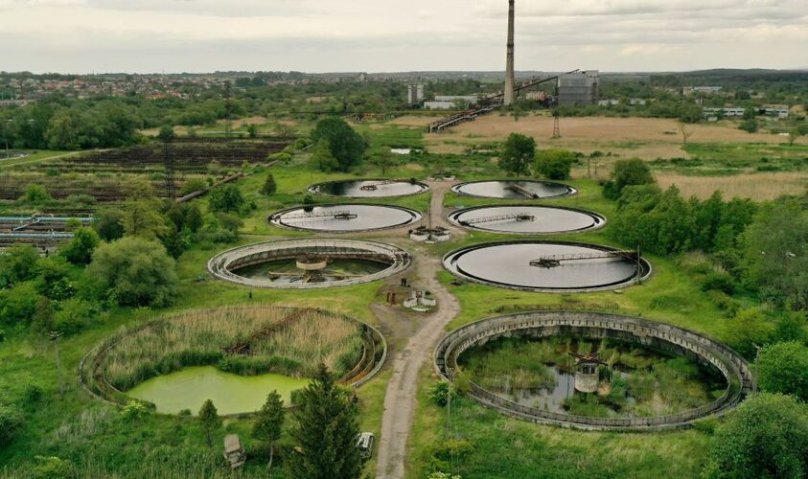
Lviv Wastewater Treatment Plant Photo by Lviv City Council
Electronic ticket and bus depot
Lvivavtodor is paying for two loan projects this year. It is about the introduction of an electronic ticket in Lviv: the loan agreement was signed back in 2016, and the project is still at the implementation stage. In addition, in 2021, the city council guaranteed that Lvivavtodor would return €13 million to the European Investment Bank for the Urban Public Transport of Ukraine project. There are three subprojects:
- Construction of a new bus depot in Lviv on Vernadsky Street.
- Reconstruction of the trolleybus contact network on the street. Zelena, Stryiska and Trolleybuska streets
- Overhaul of cable lines from traction substation No. 6 to the square. Mytnoyi and ul. Lychakivska
In total, Lvivavtodor is to return UAH 50.365 million in 2024.
New trams and trolleybuses
Another transport company in Lviv, Lvivelectrotrans, is servicing three loans at once this year.
- Purchase of 50 new trolleybuses: a €17.5 million loan agreement with the EBRD was signed in January 2019, and the last batch of trolleybuses was delivered in September 2020.
- Purchase of 10 new trams: EUR 12 million loan from the EIB. In September 2020, Lvivelectrotrans signed an agreement with Lviv-based manufacturer Electron. The contract was completed in April this year.
- Conversion of railcars to meet the needs of passengers with reduced mobility: EUR 3 million loan from the EBRD. “Lvivelectrotrans has announced an international tender, with proposals available until June 3, 2024.
This year, Lvivelectrotrans projects will cost the city UAH 75.831 million.

Lviv Mayor Andriy Sadovyi and Jean-Erik de Zagon, Head of the EIB Regional Office, in the tram purchased with the loan. Photo: Lvivelectrotrans
100 buses that did not reach Lviv
Back in 2018, Lviv City Council approved a €12 million loan from the European Investment Bank. With this money, Lviv Motor Transport Company No. 1 was to buy 100 large buses. Subsequently, an international tender was announced, which was won by the Belarusian state-owned MAZ plant. This purchase coincided with the protests against the falsification of the presidential election results in Belarus. So in April 2021, Lviv Mayor Andriy Sadovyi announced that the city government would not buy buses from the Belarusian plant. The new procurement was being prepared for almost a year, and in December 2021, ATP No. 1 announced a new tender. On April 19, 2024, the official procurement portal of the European Union published a notice of tender cancellation.
This year, ATP No. 1 will pay UAH 1.135 million to the EIB for this project.
Waste processing plant and landfill
In April 2018, the Lviv City Council approved a loan from the EBRD to build a waste processing plant and rehabilitate a landfill in Hrybovychi. The loan amount is EUR 25 million for 13 years, so we will repay this money by 2031. By the way, the reclamation of the former landfill has been completed by 95%. The construction of the waste processing complex is being delayed: in November 2023, it was about halfway complete. This year, we have to pay UAH 101 million for these projects.
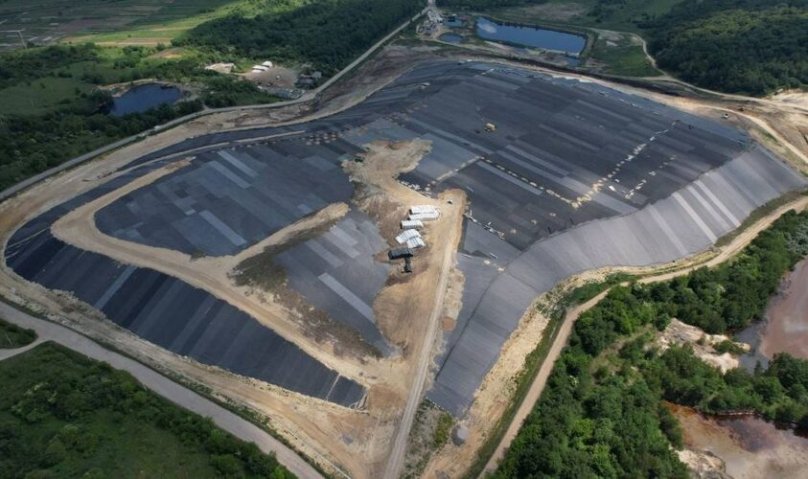
Gribovychi landfill to be reclaimed with EBRD loan
How much does Lviv owe
Municipal borrowing in Ukraine is divided into two categories: local debt, i.e. money that the city borrowed directly to its budget, and guaranteed debt, i.e. loans taken by city utilities, and the city council guaranteed their repayment to the lenders. According to the local debt management report, as of the beginning of the year, Lviv’s total debt amounted to UAH 6 billion 797 million. Of this amount, UAH 2 billion 230 million is local debt and UAH 4 billion 567.5 billion is guaranteed. Of course, we will pay this money back gradually, over several years. This year, as stated in the program of local debt management, Lviv plans to return UAH 1 billion 297.44 million (UAH 519.5 million of local debt and UAH 777.94 million of guaranteed debt). “”This is, in fact, the entire development budget,” Natalia Shelestak, chairman of the budget committee of the Lviv City Council, commented to LVIV.MEDIA. We gave another UAH 1 billion to the resistance program, so the entire development budget distributed this year is UAH 0.5 billion. If we compare that UAH 0.5 billion is our development, and UAH 1.3 billion is debt repayment, it is clear that it is quite a painful blow to the budget“.
On the other hand, Victoria Dovzhyk, director of the financial policy department at Lviv City Council, believes that the debt situation is normal and stable. In a commentary to LVIV.MEDIA, she emphasized that the limit for Lviv’s municipal debt is UAH 8.8 billion (according to the law, the maximum debt for a city cannot exceed 200% of its average annual income). “We still have about 3 billion that we can borrow. We are not even close to reaching the limit, and we can raise about EUR 65 million of additional funds ,” said Viktoriya Dovzhyk.
War changes priorities
According to Natalia Shelestak, with the start of the full-scale invasion, many of the projects for which loans were taken actually stopped. According to her, the main area where the city government is currently directing money is medicine for the military and everything related to it. As for the remaining projects, the city council is conducting an audit to determine which ones should be prioritized and completed faster.
“With the full-scale invasion, we have revised our approaches to the use of funds. Last year, MPs voted in favor of the officials’ proposal for the so-called “Solidarity Package” for four utility companies that cover their operations with credit funds. At that time, 1 billion was agreed upon, but the money was not spent in full. This year, the city has not taken out such loans, and we are trying to solve the problems on our own. At the moment, there is no question that new loans will be taken out immediately.”Natalia Shelestak said.
Victoria Dovzhyk, Director of the Financial Policy Department at Lviv City Hall, agreed that the pandemic and full-scale invasion have shifted the city’s priorities. In particular, more money was redistributed to healthcare, first in general, and later to rehabilitation. According to her, in 2023 alone, about UAH 600 million was allocated from the development budget for the development of medical facilities, including the arrangement of the Unbroken rehabilitation center. However, the official added that most of the money raised for the development of the center was from grants.
What will we borrow for next?
Regarding future loans, both Natalia Shelestak and Victoria Dovzhyk said that the city will most likely seek additional money to complete the project to build a waste processing plant. “I hope we will complete the waste processing plant by the end of the year and launch it next year. It looks like we’ll have to raise money for this, because we don’t have any, and it’s wrong to delay construction. The contract is written in such a way that indexation takes place every year. So the longer we take to build this plant, the more it will cost. At the same time, we are talking about quite large amounts – up to 20-30% of the price increase.”Natalia Shelestak explained.
When asked whether the city council plans to take out new loans to implement other infrastructure projects, the deputy replied that this issue has not yet been raised in public. Natalia Shelestak noted that if the Lviv City Council launches new projects, they will be “critical things.” In particular, she cited the example of the bridge on Kovcha Street, which connects Shevchenko Street and the Ryasne neighborhood. “It is an emergency bridge, although it is not legally recognized as such. We understand that this is a dangerous bridge, and that if something happens there… There was also an “arrival” nearby, which could have made its condition even worse. I think it should be a priority.”The head of the budget committee added.
Victoria Dovzhyk believes that the Lviv City Council could also take a loan from the European Investment Bank to build infrastructure around the Unbroken rehabilitation center. In particular, the plans include repairing Mazepa and Hrinchenko streets. “When it comes to the Unbroken project, it’s about building infrastructure, as the center has already grown beyond the ambulance hospital itself. Several new elements are envisaged, in particular, housing is being built on Mykolaychuk Street for those who will undergo treatment and rehabilitation at Unbroken, and Mazepa and Hrinchenko streets are an important transport interchange to this street.”Director of the Financial Policy Department of the Lviv City Council noted. However, she also added that the city council’s current priority is to finalize and complete the projects that have already been launched.
It appears that there is still no consensus among city hall officials and city council members on what the city’s policy should be with regard to new borrowing. Therefore, it can be predicted that every attempt to take out a new loan will provoke a confrontation between the two branches of the city government.

